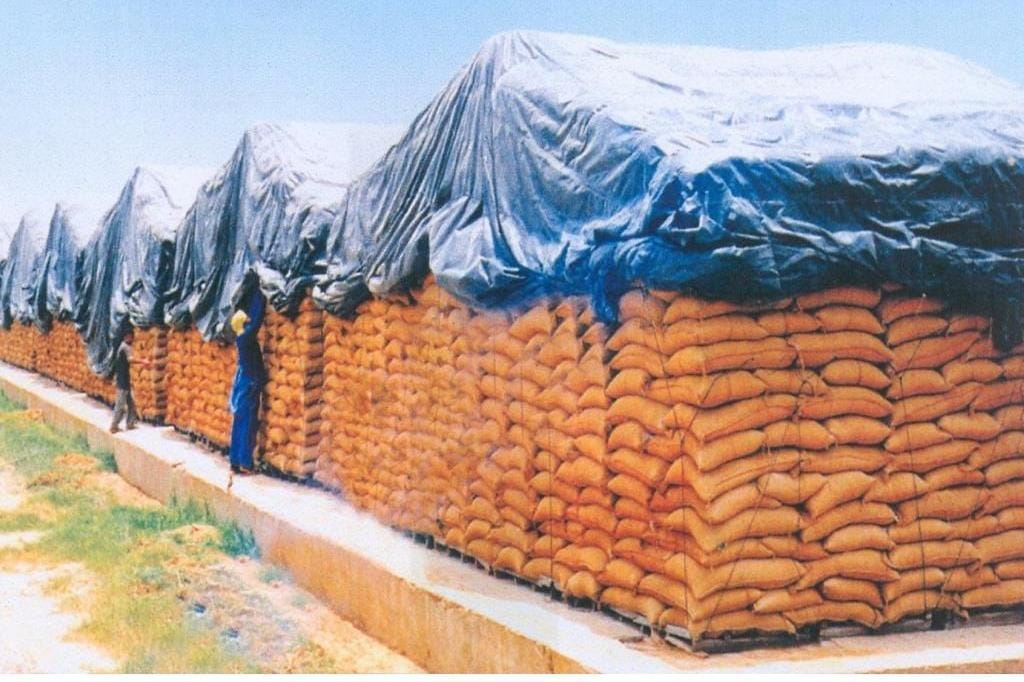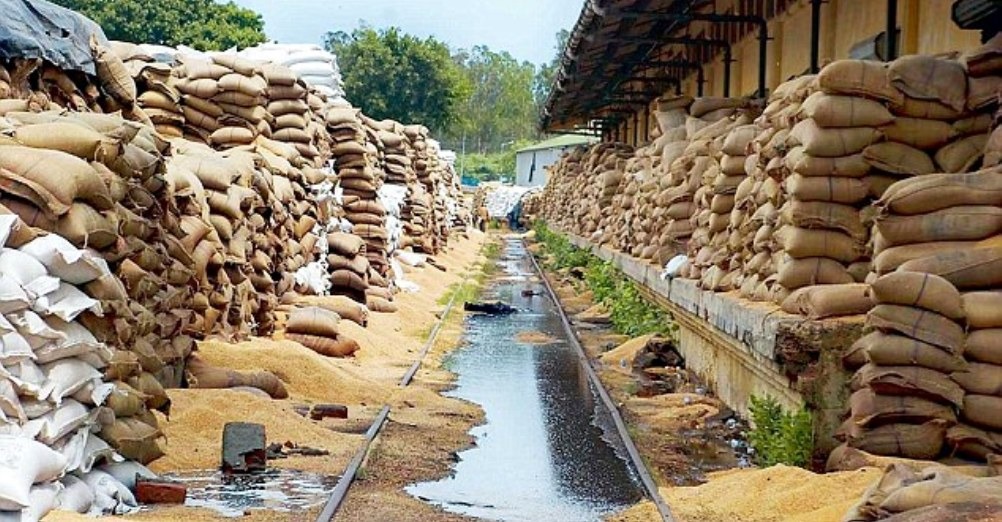Food security is a key challenge on a planet with a population of over 7 billion people. According to the United Nations, the world’s population will reach 9 billion people by 2050. As a result, there will be more people to feed and fewer available resources. Food security is the global problem that impacts everyone which is normally linked with the production and not with the storage. Right from Independence, India has done record breaking food grain production with an estimated yield of 308 million MT in 2021-22. The Total food grain production in India has grown at an average of 2% which is higher than the average rate of population growth of 1.5% of the country. Thus, India has enough food to feed its population. Still, India has been ranked 101st in the Global Hunger Index 2021 in the list of 116 countries behind our neighbour Pakistan, Bangladesh and Nepal.
The Harvest span of most commodities is short but the consumption is spread throughout the year. Thus, food security is ensured by the availability of food grain throughout the year with a proper storage infrastructure. The best available practice to store food grain scientifically for the longer duration is the use of metal silos. In India, the government has built only 4-5 silos which are obviously not enough. Thus, most of the food grain is stored either by using CAP (cover and plinth method) or in conventional warehouses. It is estimated that around 30 million tonnes of food grains are stored across India using CAP, or cover and plinth method by the government (FCI). During the rainy season this method of storage becomes risky as with humidity and the warmth of the summer there is rampant fungal attack which makes the grain mouldy. Thus, every year in India 10% of food grain rot due to poor storage infrastructure. In such a situation, access to affordable and scientific storage infrastructure to the smallholder farmer is far from the reach.

Issues in storage in India
-
Poor farm storage facilities:
The storage facilities at farm levels are poor, often leading to damage by pests and insects. Also not suitable for long-time storage of grains -
Imbalances in availability of storage capacity:
Storage capacity of India is only 91 million MT against the production of 308 million MT. Most of these storage infrastructures are used by the government, and traders. For smallholder farmers, storing their produce into these storage infrastructures is not affordable and accessible due to small quantities that they seek to store. -
Storage of grains in open space:
During procurement season, due to lack of proper CAP storage facilities, stocks are simply dumped in open spaces and much of these stock gets damaged because of seepage of water from the ground in the absence of proper plinth or height from ground or due to floods and rains. -
Poor and outdated infrastructure of Storage facilities:
The warehouses lack adequate ambience such as proper temperature and moisture which greatly affects the quality of grains which leads to damage and wastage of the produce. The grains get infested with moulds and insects due to lack of safe and scientific storage practices.

Associated Health issues:
- Fumigation of pesticides on stored food grain is a common practice. Consumption of such food leads to severe health issues. According to a WHO paper, disease causing mycotoxins are found in mouldy grain/foods. These release Aflatoxins which have serious health implications and cause cancer.
Approach to ensure food security
Though, increase in food production is a favourite option for many governments still, some focuses on reducing the postharvest losses at farm gate. There are no straight answers to the question on how to reduce postharvest losses? There are various ways to store food grain scientifically for longer duration such as metal silos, open weave sacks, improved mud silos, polythene bags, plastic drums and hermetic storage. Storing food grain in silos is a widely acceptable method to ensure better and scientific handling of food grain. In developing countries like India, Sub-Saharan Africa where most of the farmers are smallholder farmers, storing food grain in silos isn't the viable option though. It requires huge investment to build metal silos.
Need of decentralised storage in India
The gap between food security and bulk foodgrain storage is filled by the storage at the farm level. The current crisis of covid 19 lockdown underlines the fact that we need to move away from the centralised storage system. An important challenge during the pandemic was to maintain the supply of food grain to its larger population especially in rural areas. The storage of food grain at village level makes the villages more self-reliant on meeting their own exigencies. It also provides an agency to the farmer to hold their surplus produce and wait for the favourable market conditions. This shall result in increase in income of farmers and steady supply of food grain into the market. Scientific storage not only reduces the postharvest losses but also maintains the quality of the stored food grain which helps the exporter to maintain the quality of the food grain as per the international requirements to export the food grain.
Thus, for developing countries access to affordable scientific storage infrastructures assures good income to its 60% of population, reduces postharvest losses and brings food security for all.
(Photos courtesy: IAS)






Leave your comment